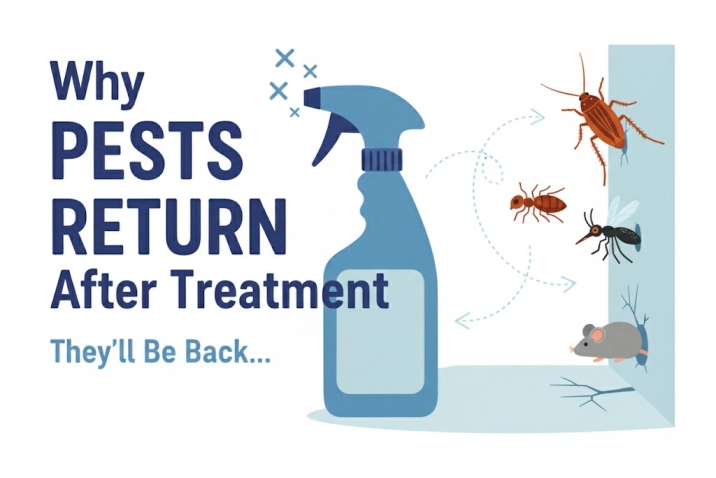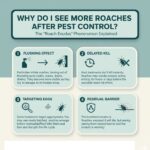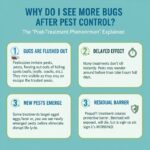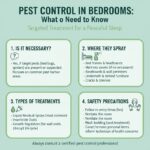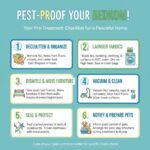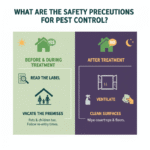Keeping pests out of your home can feel like a never-ending battle. You invest in professional pest control, breathe a sigh of relief, and then weeks or months later you start seeing them again. This raises an important question: Can pests return after treatment? The answer is yes, but not always for the reasons you might think. Understanding why pests come back and how to prevent re-infestations can save you time, stress, and money.
Why Pests May Return After Treatment in Your Home and Office
Even with professional pest control, certain factors can cause pests to make an unwanted comeback. Let’s look at the main reasons this happens.
Incomplete Pest Elimination
Some pests are more resilient than others. For example, bed bugs, roaches, and termites can lay eggs deep in hidden cracks or wall voids. If even a small portion of the population survives the first treatment, they can quickly reproduce and re-establish themselves.
Points to note:
- Pest eggs may survive initial sprays or treatments
- Some infestations require multiple visits for full elimination
- Residual activity can last for weeks, so patience is key
Cincinnati Environmental and Seasonal Factors
Pest activity is heavily influenced by the weather. During warmer months, insects like ants, mosquitoes, and cockroaches become more active. As temperatures drop, rodents and spiders seek shelter indoors. This natural cycle can lead to pests reappearing even after professional service.
Example: You may notice more ants after heavy rainfall or see mice entering your basement during winter. These are not signs of a failed treatment but rather seasonal behavior.
Reinfestation from External Sources
Sometimes pests do not return; new ones move in. They may enter through open windows, gaps around doors, or pipes connected to neighboring units. Poor sanitation, standing water, and uncovered food can also attract fresh infestations.
Points to remember:
- Seal small openings and cracks around windows and foundations
- Keep food stored in airtight containers
- Clean up spills and crumbs regularly
Incorrect or Incomplete Pest Treatment
DIY sprays or incomplete treatments often fail to reach hidden nesting sites. Over-the-counter products can offer temporary relief but rarely provide a long-term solution.
That’s why working with professionals offering local pest control in Cincinnati ensures proper inspection, targeted treatments, and lasting results. Local experts understand the pest behavior unique to your area and use proven pest control methods to eliminate infestations completely.
How Long Should Pest Control Last?
The duration of pest control effectiveness depends on several factors such as pest type, infestation level, and property conditions.
Typical Lifespan of Different Pest Treatments
| Pest Type | Expected Effectiveness Duration |
| Ants | 2–3 months |
| Cockroaches | 3–6 months |
| Termites | Up to 5 years (with ongoing monitoring) |
| Rodents | 1–3 months (depending on baiting) |
| Bed Bugs | Often requires multiple sessions |
Indoor vs. Outdoor Treatments
Outdoor treatments are more exposed to the weather and often need reapplication every few months. Indoor pest treatments typically last longer but may require follow-ups if new pests enter from outside.
Regular maintenance can help maintain a pest-free environment throughout the year.
What to Do If Pests Return After Treatment
If pests appear again after treatment, it does not necessarily mean the service failed. Here’s what you should do:
Contact Your Pest Control Provider
Reputable pest control companies often provide warranties or free follow-up visits within a certain period. Reach out to your provider and share:
- The type of pest you’re seeing
- When and where you noticed the activity
- Photos or evidence if possible
If you’re facing an urgent infestation, look for emergency pest control near you to get immediate help, especially for aggressive pests like hornets, rats, or termites.
Take Preventive Steps
Even with treatment, prevention plays a huge role in keeping pests away.
Here’s how you can help:
- Keep your home dry by fixing leaky pipes and reducing humidity
- Clear clutter to eliminate hiding spots
- Store pet food in sealed containers
- Regularly empty garbage bins
Schedule Regular Inspections
Scheduling routine inspections ensures that pest control professionals can detect early signs of infestations before they spread. This proactive approach reduces long-term pest control costs and keeps your home consistently protected.
How to Prevent Future Pest Infestations
Prevention is always better and cheaper than a cure. Combining multiple pest control methods ensures your home remains a pest-free zone.
Integrated Pest Management (IPM)
IPM is a modern approach that combines chemical, biological, and physical methods for effective pest control. Instead of relying solely on sprays, professionals use traps, exclusion techniques, and eco-friendly options to target pests without harming the environment.
Regular Home Maintenance
Keep up with repairs around your home. Seal foundation cracks, replace damaged window screens, and maintain proper drainage. Overgrown vegetation and untrimmed trees can provide bridges for pests to enter your home.
Key preventive points:
- Trim shrubs and trees touching the walls
- Clean gutters and remove standing water
- Inspect attics and basements regularly
Common Myths About Pest Treatments
Misconceptions about pest control can lead to repeated infestations and wasted money.
“One Treatment Solves Everything”
Some infestations, especially termites and bed bugs, require multiple visits. The first treatment weakens the population, while follow-ups ensure total elimination.
“If I Don’t See Pests, They’re Gone”
Many pests, like termites or bed bugs, remain hidden long after visible activity stops. Continued monitoring is essential.
“DIY Pest Control Works Just as Well”
Store-bought sprays and traps can help temporarily, but they do not address the root cause. Professionals use targeted products and advanced techniques that guarantee lasting results.
FAQs About Pests Returning After Treatment
How soon can pests come back after treatment?
Some pests may reappear within days as they are forced out of hiding. It is normal to see increased activity initially, but it should decrease within one to two weeks.
Should I Clean the House After Pest Control?
Yes, but wait at least 24 hours before cleaning treated areas. Light cleaning is fine; just avoid washing away applied barriers.
Is it normal to see more pests right after treatment?
Yes. The treatment disrupts their hiding spots, causing temporary visibility before they die off.
How often should I schedule pest control services?
For most homes, quarterly treatments are recommended. However, properties prone to high pest activity may need monthly or bi-monthly service.
What type of pest control lasts the longest?
Termite and rodent treatments, when maintained properly, can last for years. Regular follow-ups help ensure ongoing protection.
Conclusion
Yes, pests can return after treatment due to incomplete elimination, the hatching of protected eggs, new pests entering through unsealed entry points, and improper home maintenance. Increased activity immediately after treatment often shows that the process is working, as pests are driven out of hiding. Follow-up treatments and sealing entry points are essential for long-term success. Regular maintenance and timely professional pest control help keep your home safe and pest-free while reducing overall pest control costs.

